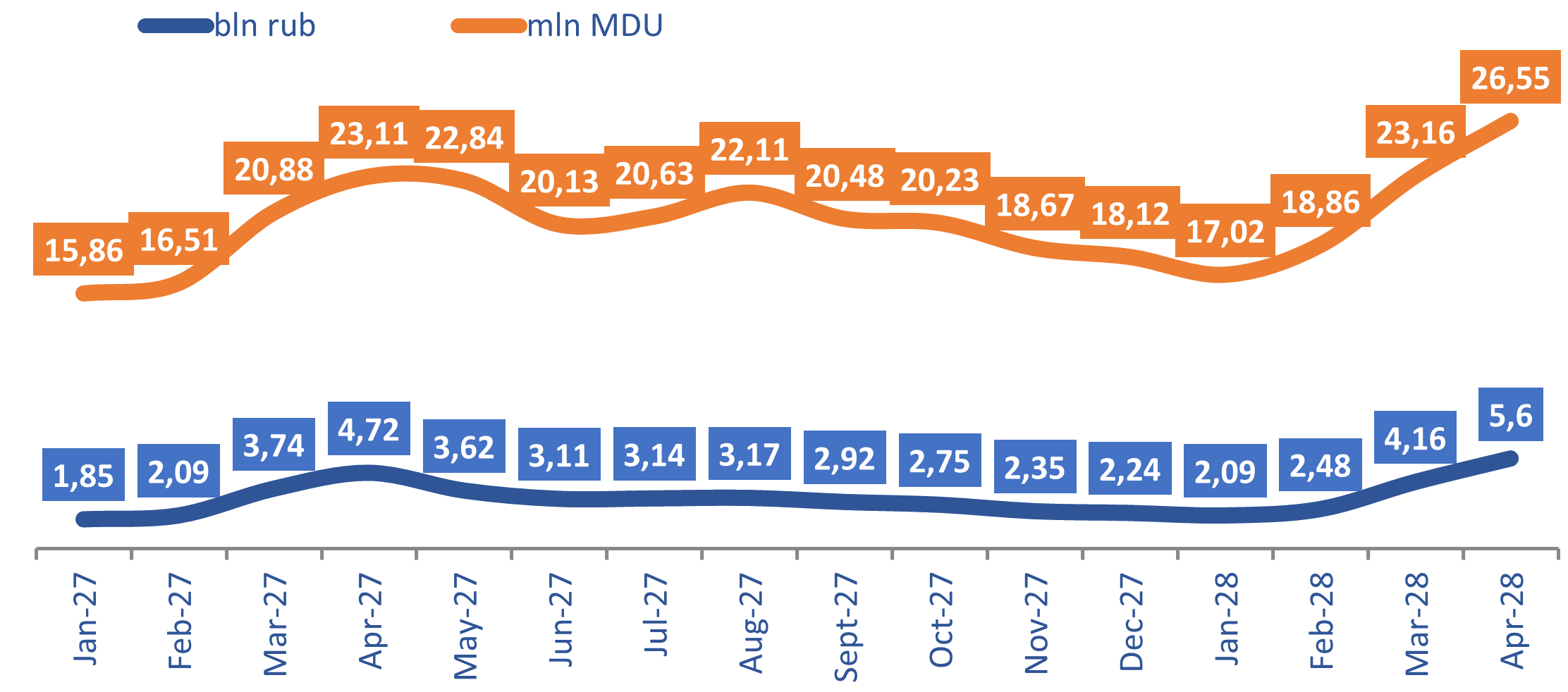Ranking of Pharmaceutical Drugs with Highest Distribution (January–May 2024)
The sales of a pharmaceutical drug are most often directly dependent on the actual availability at the point of sale at the time of the consumer’s request. Manufacturers tend to try to make sure that their products have the highest numeric distribution, although it is bound to fluctuate. While the distribution of certain products usually increases at the launch, the distribution can sometimes drop due to competition or supply interruptions.
For every drug, it is possible to calculate its numeric distribution at a specific point. We have analyzed the retail market to find out which brands were most common in Russian pharmacies in the first five months of 2024.
Nurofen by Reckitt Benckiser (UK) had the highest distribution in January–May 2024; it was available in more than 95.6% of pharmacies, even rising slightly from the same period last year. Nurofen is followed by Pentalgin by OTCPharm (Russia) with 95.1%. Concor by Merck ranked third with 94.2%. Notably, every top 15 brand has a numeric distribution of more than 90%, while only 23 products on the Russian market are available in more than 90% of pharmacies. The total sales of the 15 brands were more than 32 billion rubles, or around 121 million packages in January–May 2024 (retail prices, VAT included). Dr. Reddy’s had the most brands in top 15: Omez, Nise, Ibuclin and two more, with a distribution of 93 to 94%.
The absolute leader among the most distributed pharmaceutical drugs in Russia, Nurofen, ranked fifth in terms of sales, with 4 billion rubles. Interestingly, the distribution of the drug was still relatively low in certain regions. For example, Nurofen was available in 84.9% of pharmacies in the Chechen Republic, and in 86.7% in Chukotka. Pentalgin saw a similar situation in Chukotka (80%) and in Penza Oblast (98.3%).
At the same time, Xarelto by Bayer, the leader in terms of retail sales (more than 6 billion rubles), had a numeric distribution of only 73%. Most of the 10 best-selling brands had a distribution of 70 to 90%.
There were also brands with very low numeric distribution. Those brands include drugs that are no longer sold in Russia or drugs that have encountered import difficulties. For example, while imports of two drugs for erectile dysfunction, Cialis and Viagra, ceased in 2022 and 2023, respectively, occasional sales are still being recorded. In January–May 2024, Viagra had a distribution of 5%, and Cialis of only 0.1%. In addition, drugs with low distribution often include drugs that are paid for by the government and are usually sold by specialized retailers.
Fig. 15 brands with the highest numeric distribution in January–May 2024

 Рус
Рус




